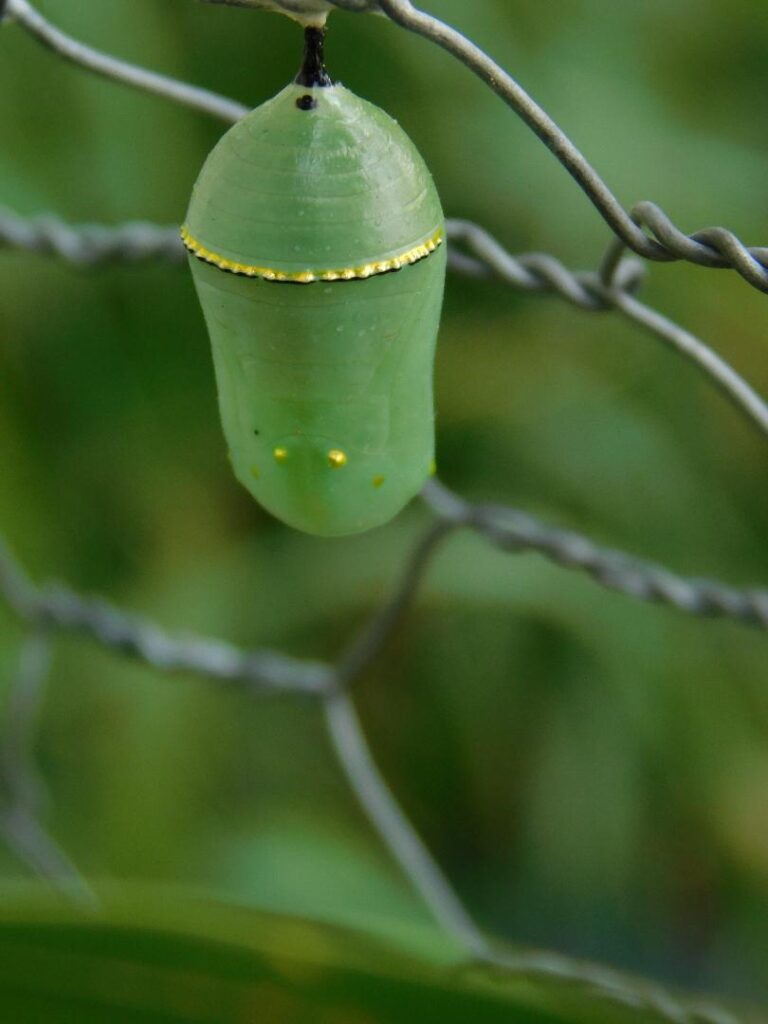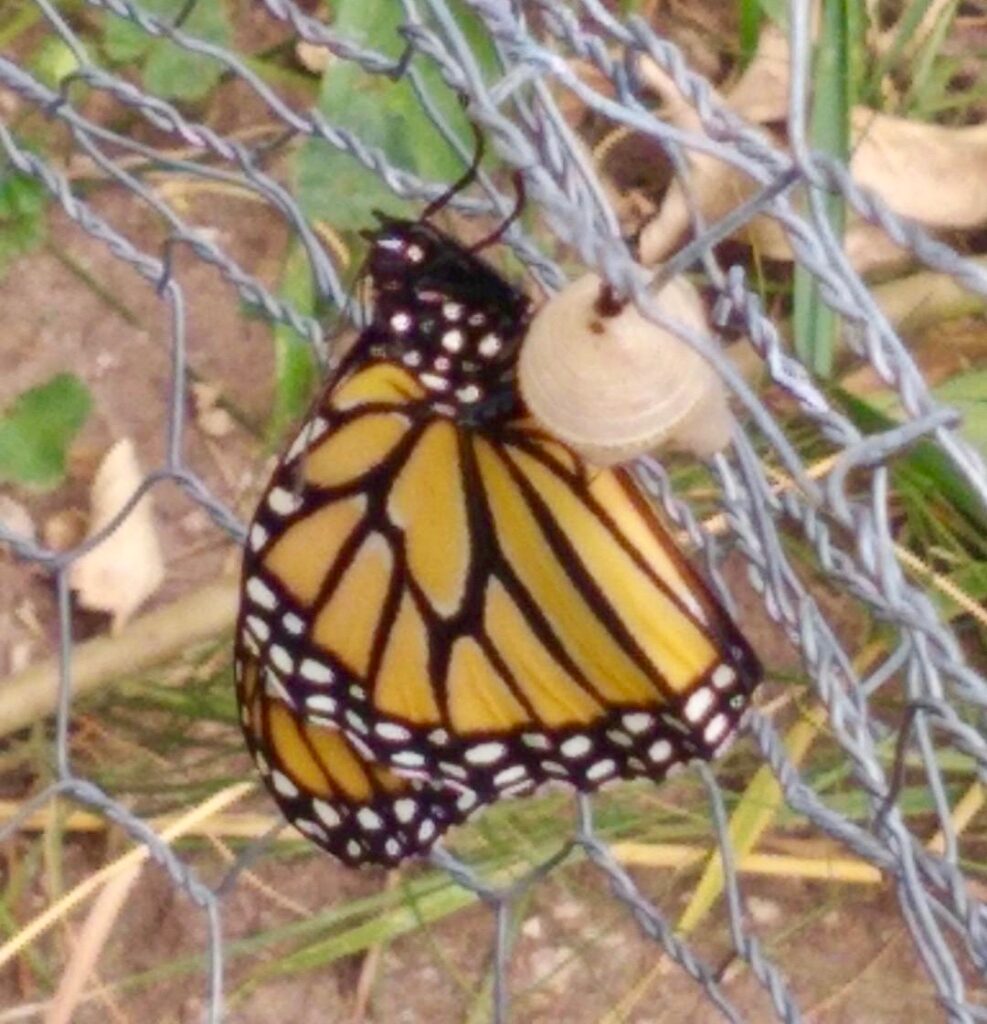Monarch butterflies start their migration through Laramie County in late July and can be seen through early fall as they make their way south to their winter home in Mexico. Until recently Laramie County was recognized only as a nectaring stop for monarchs but now the county is seen as a nursery in the monarch life cycle – generation #4.
Category Archives: Insect
Brown Bumble Flower Beetle
The Brown Bumble Flower Beetle is not a good flyer and stays low to the ground. They pollinate flowers and help decompose organic material. Please do not spray them with an insecticide.
Thanks to 3melissahrkach for the photo!
Black Witch Moth
I found this Black Witch Moth (Erebid moth Ascalapha odorata) resting in my barn. This is one of the largest nocturnal moths in North American and ranges from the Caribbean, Texas to Canada. The one I found was a good 6 inches wing tip to wing tip. They are notorious for entering buildings, but cause NO harm to plants or people. In the Caribbean they are known as the “money moth” and thought to be a sign of coming into some cash or winning the lottery.
Emerald Ash Borer
Emerald Ash Borer Detected in Fort Collins
State and City experts have confirmed the presence of emerald ash borer (EAB) – an invasive, highly-destructive pest of ash trees – on the north end of Fort Collins, just outside city limits. This represents the second detection in the county, and the fourth confirmation of EAB in Colorado outside of Boulder County. Spotted by a local, licensed tree care company, identification of gathered EAB samples was confirmed this week by entomologists from Colorado State University.
EAB was first confirmed in Boulder, Colorado in 2013. Since then, the pest has been identified in several other municipalities in Boulder County including Broomfield (August 2019), Westminster (September 2019), and Berthoud (October 2019).
Six years ago, a state quarantine was established in an effort to prevent or slow the insect’s spread via the movement of ash nursery stock, firewood, and other wood that may have been contaminated. In 2019, the Colorado Department of Agriculture (CDA) repealed the Boulder County quarantine due to the discovery of EAB outside of Boulder County. Human transport of infested ash wood, such as firewood or other raw material, most likely contributed to the arrival of EAB in Fort Collins.
Approximately 14 percent of all city-owned trees are ash (Fraxinus spp.), with many additional ash trees located on private properties throughout Fort Collins. In response to the arrival of EAB, Fort Collins will continue to follow the City’s Emerald Ash Borer Management and Response Plan, managed by the Forestry Division. Since the City’s 2015/2016 budget cycle, the Forestry Division has received funding to selectively remove and replace ash trees in poor condition, shadow plant ash trees that are not planned to be treated long term, evaluate all ash trees on public property and provide EAB education and outreach to the community. As part of the response plan, the City will start a treatment rotation of strategically selected, healthy public ash trees in Spring of 2021.
EAB attacks and kills both stressed and healthy ash trees, typically within two to four years after infestation. At this time, the Forestry Division is advising Fort Collins residents to act now and start implementing their own EAB management plans. Residents should first determine if their property has any ash trees, and if so, evaluate the condition of each tree, with continued monitoring throughout the year. Residents should also decide whether to have infected ash trees treated, or removed and replaced. City Forestry staff urge residents to weigh the benefits and costs associated with ash removal and replacement, versus ongoing insecticide treatments.
“It’s important to remember that this is a natural disaster in slow motion,” states Kendra Boot, City Forester. “Since EAB’s first detection in Colorado, we had the opportunity to plan and prepare for this pest, unlike other parts of the state and country. As always, we will approach the management of this invasive pest thoughtfully and thoroughly, while balancing the social, environmental and economic impacts that EAB will have on our resilient community.”
EAB tends to move slowly through natural spread and quickly through human transport. Now that EAB has been detected in Fort Collins, it is important to keep all ash material in Fort Collins to prevent continued spread to other communities.
For more information regarding EAB, visit fcgov.com/forestry/emerald-ash-borer.
Fort Collins residents with questions specific to EAB management on their property should contact the City of Fort Collins Forestry Division, or a Fort Collins licensed tree care company listed at fcgov.com/forestry/arborists.
Contact information and other resources are below:
- Fort Collins City Forester: 970-221-6361 orforestry@fcgov.com
- Larimer County Forestry: 970-498-5765
- CSU Extension, Larimer County: 970-498-6000
- Fort Collins Field Office, Colorado State Forest Service: 970-491-8348
Donna Davis
Eastern Colorado
U&CF Program Specialist
Colorado State Forest Service
9769 W. 119th Dr., Ste 12
Broomfield, CO 80021
719/468.9499 Mobile
Donna.Davis@colostate.edu




